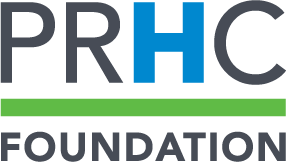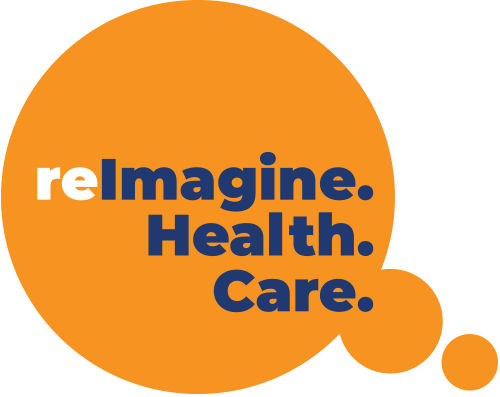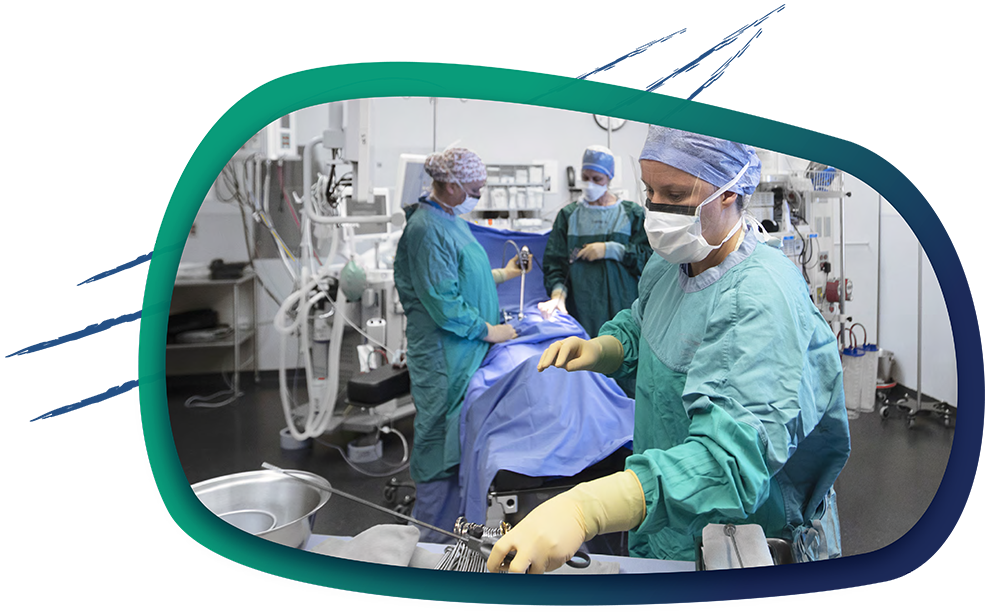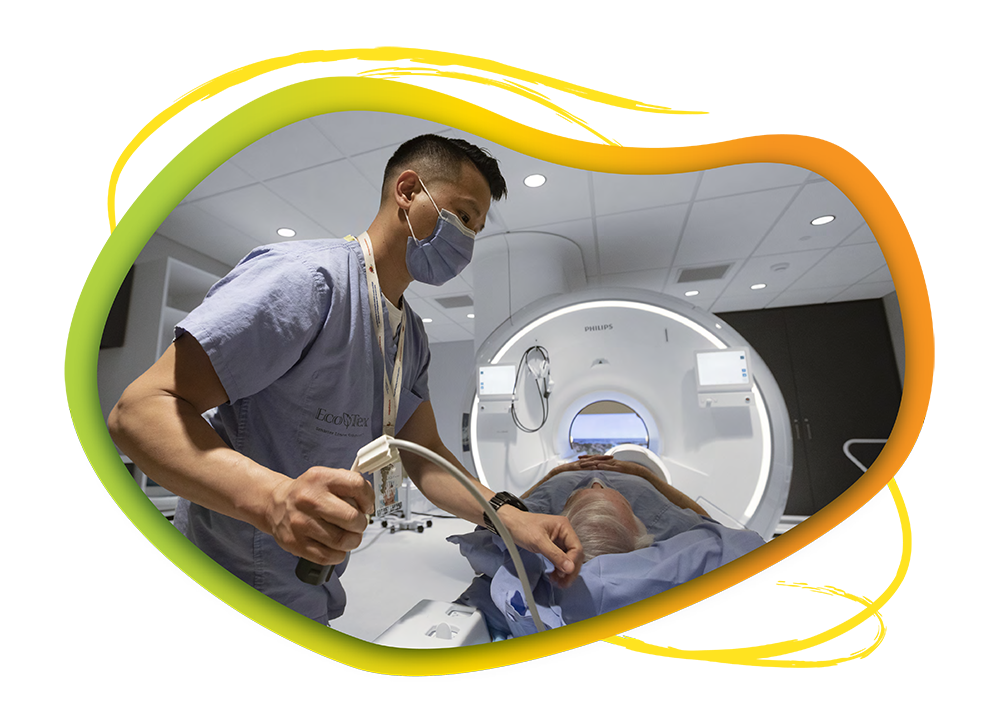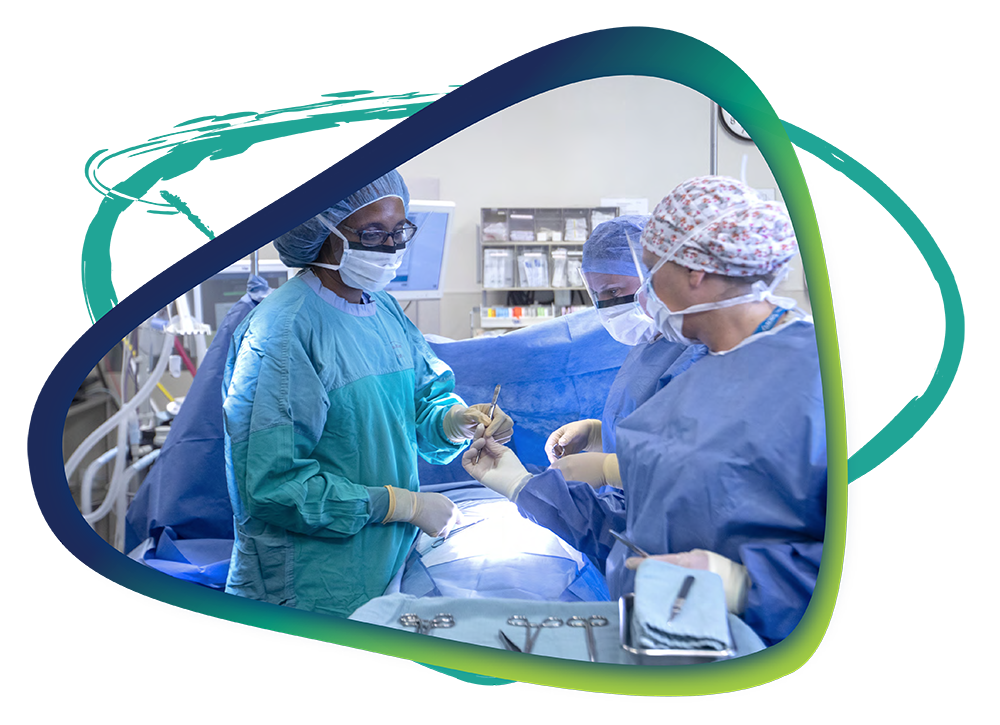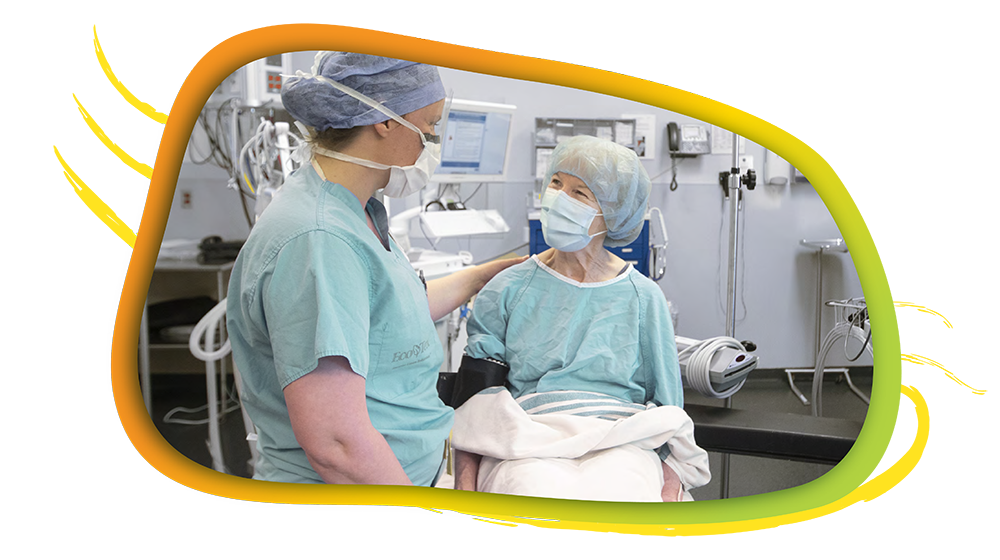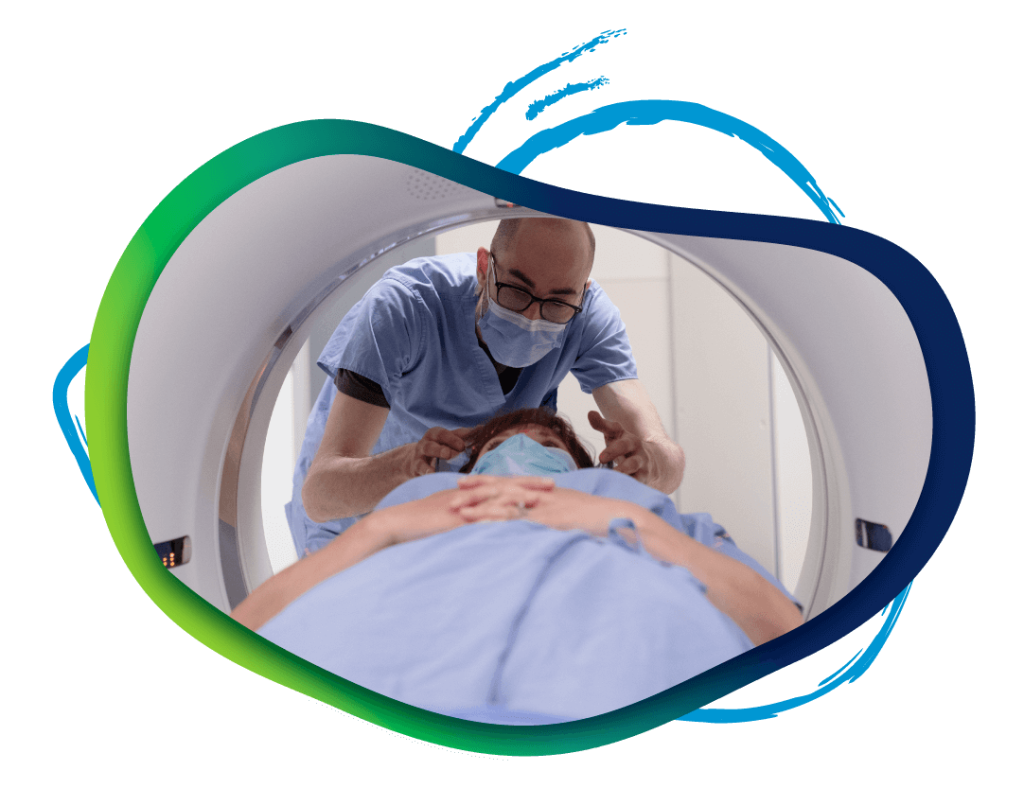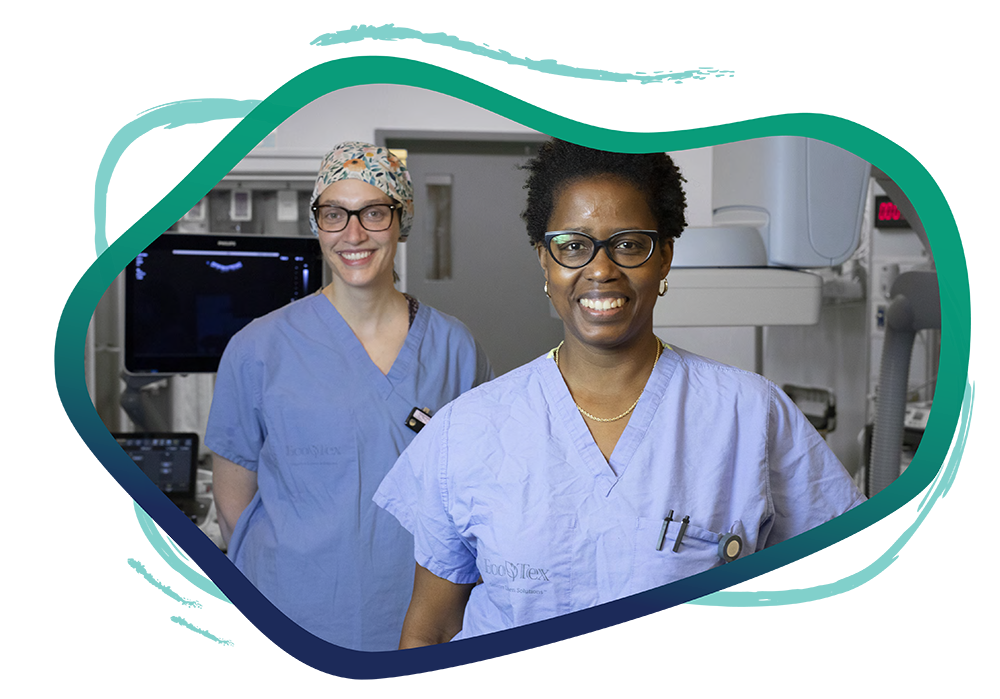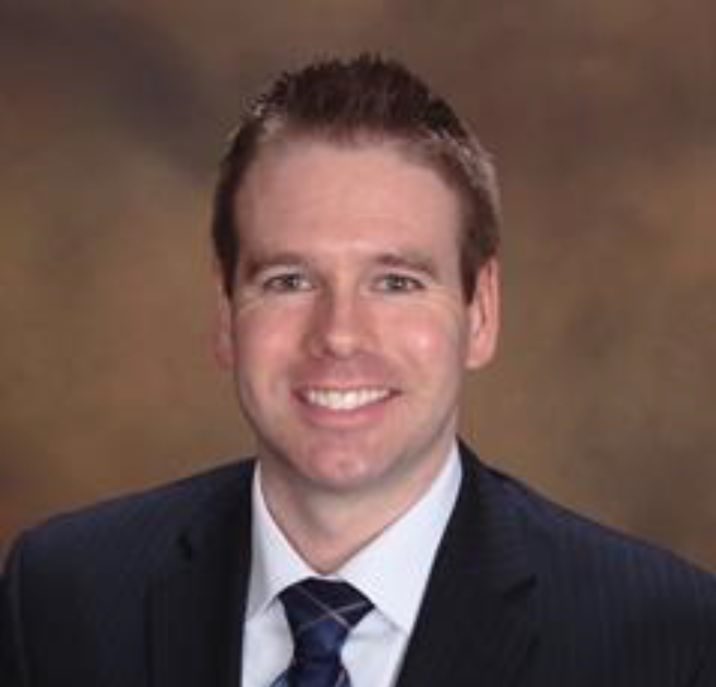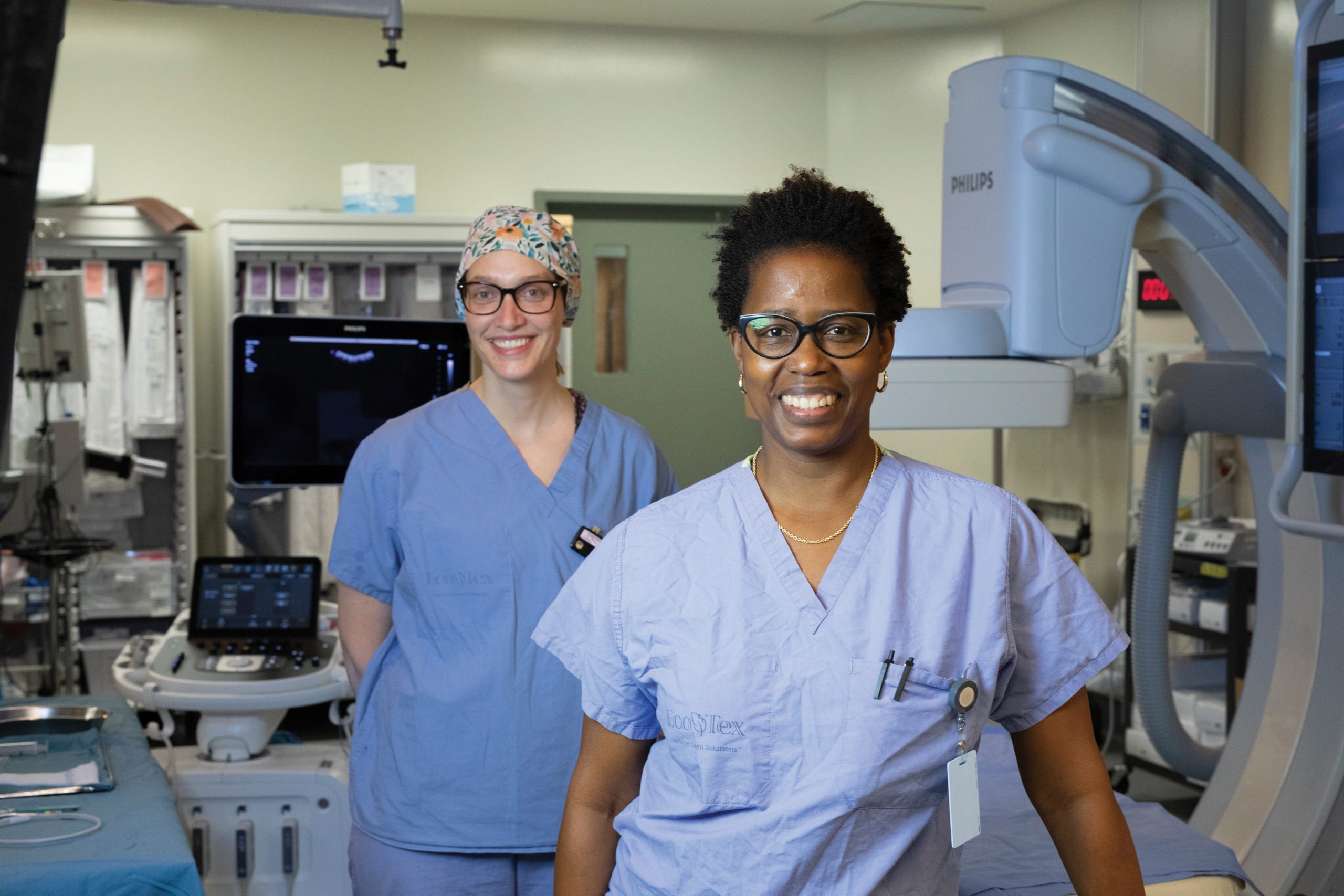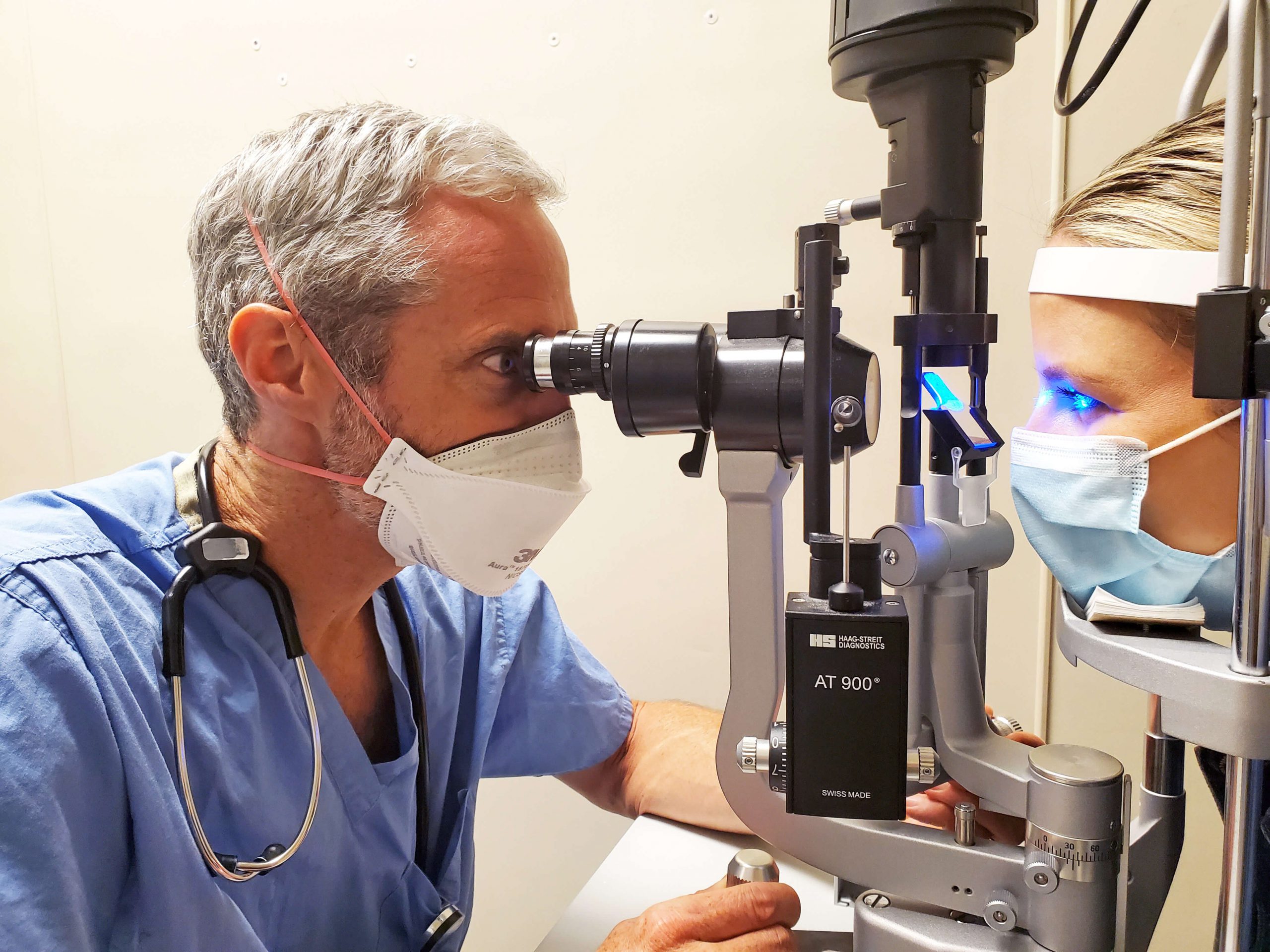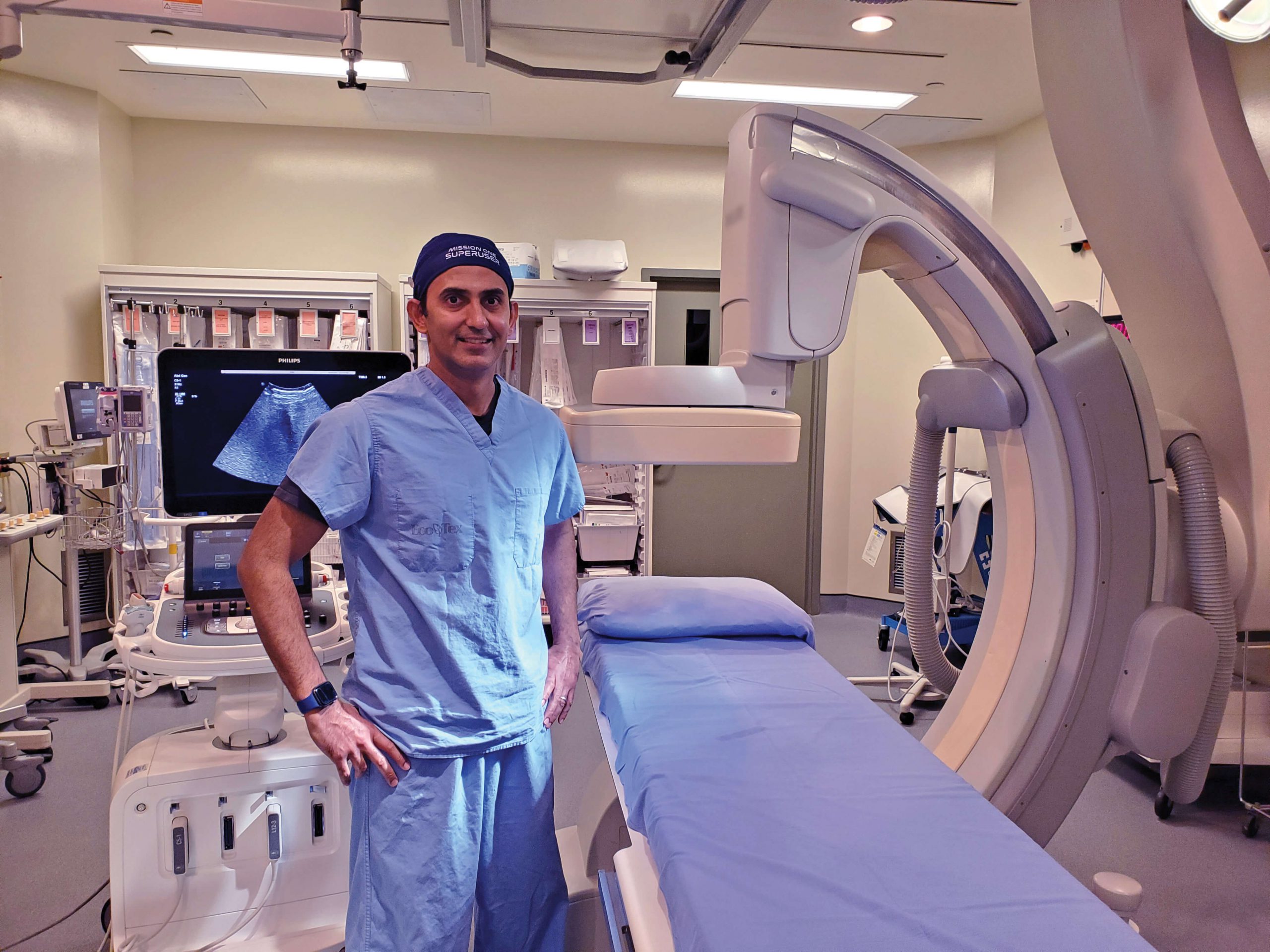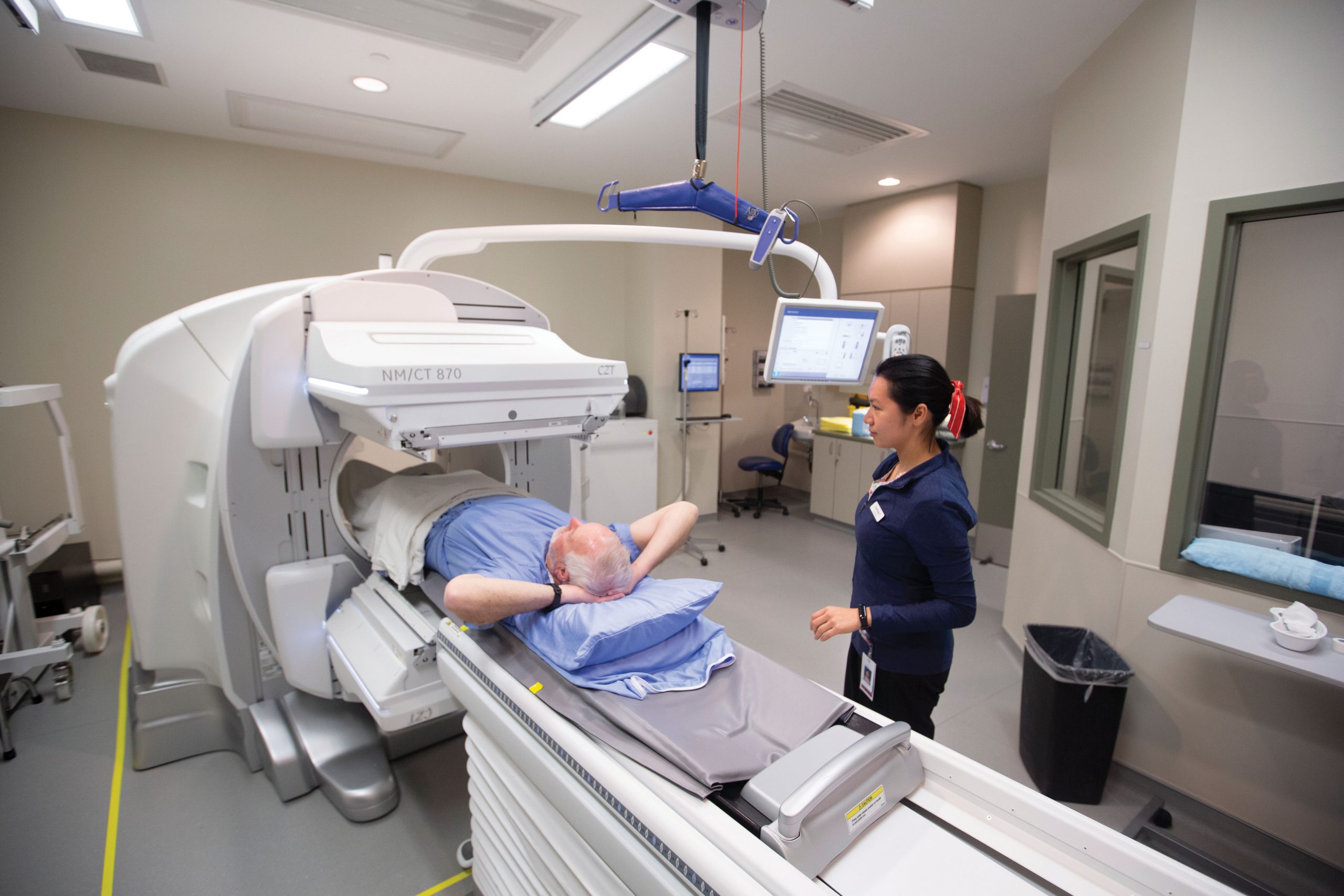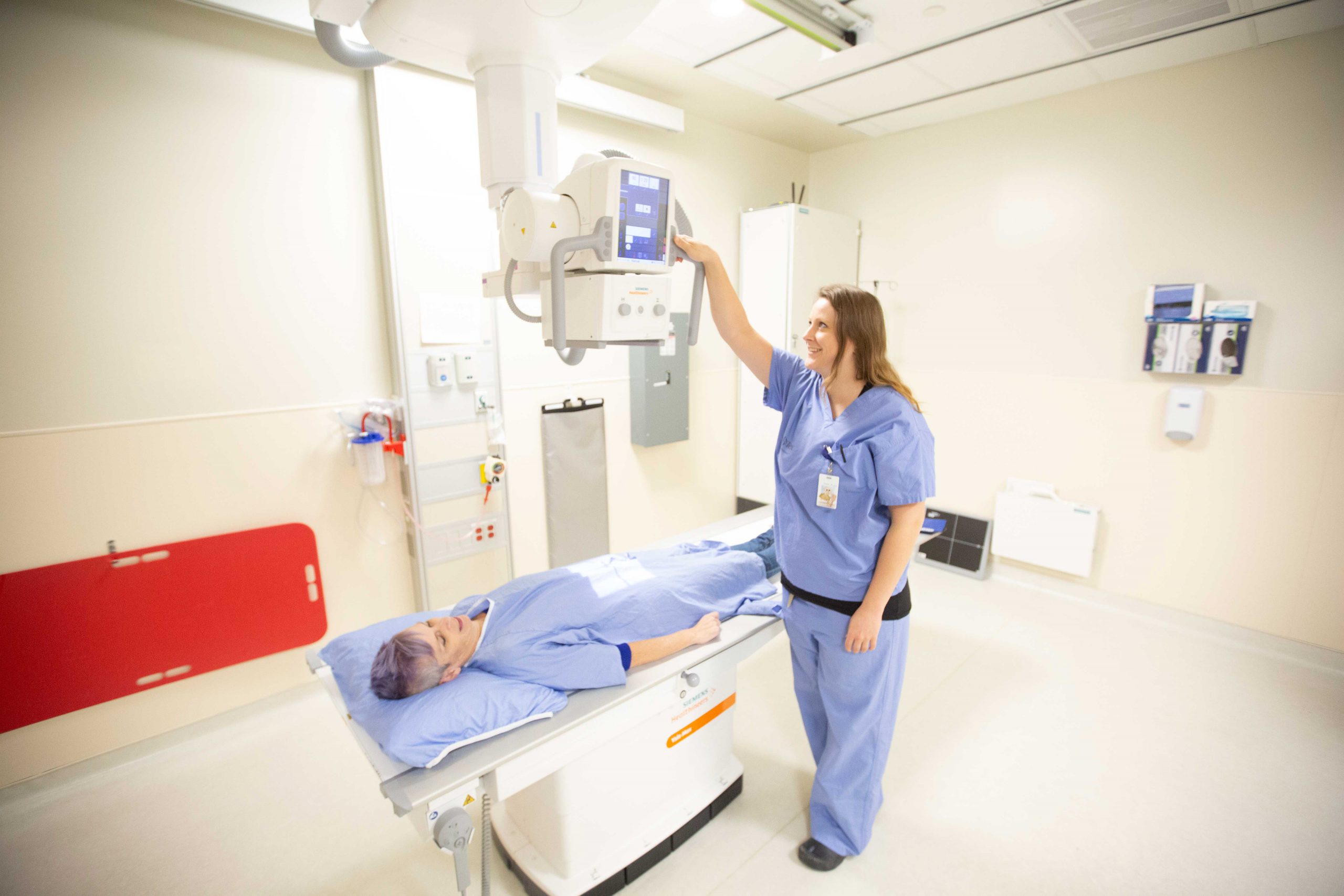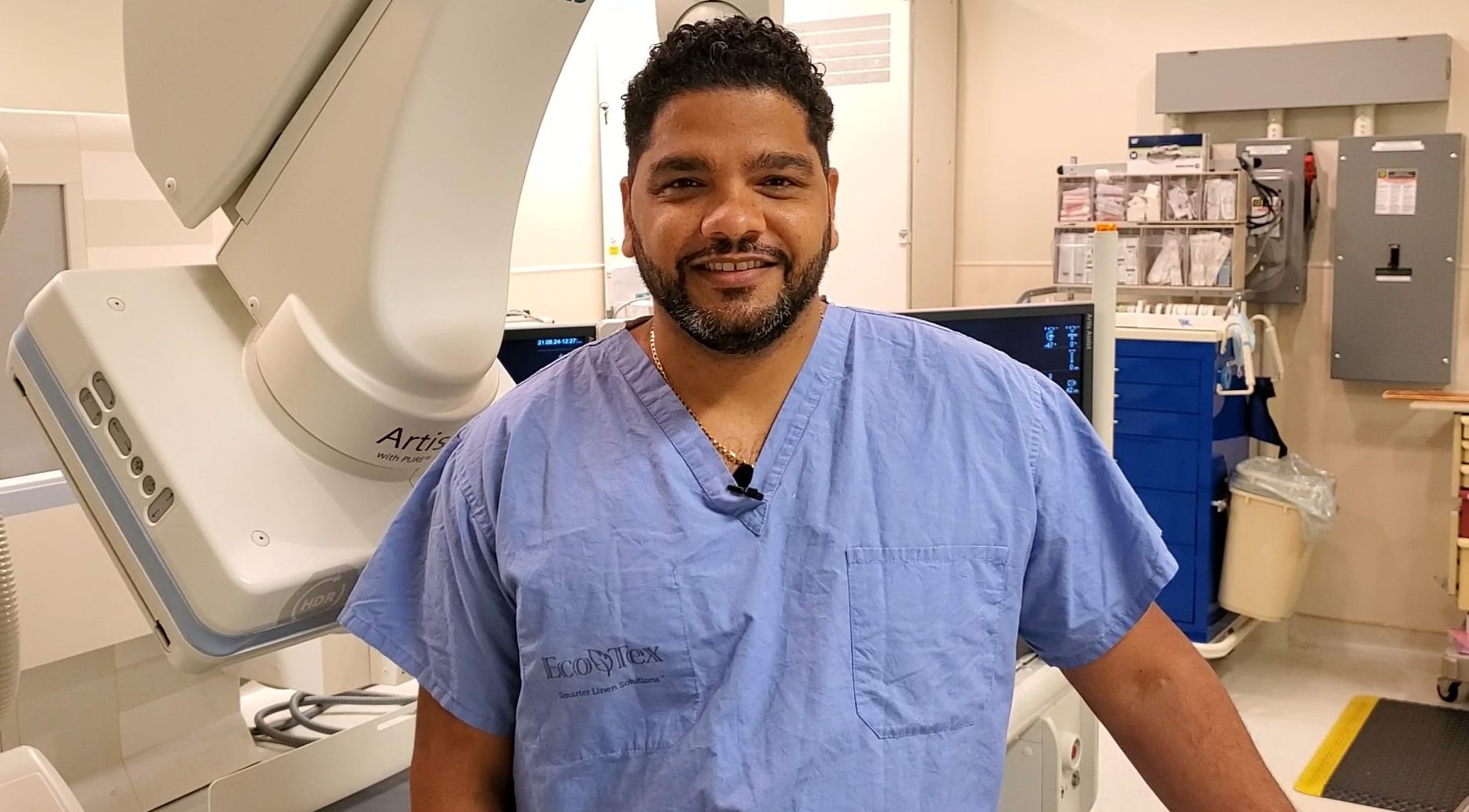Every year, thousands of people from across Peterborough and the surrounding region…
Continue readingDr. Andrew Kelly joins the Cardiac Cath Lab team
PRHC was pleased to welcome Dr. Andrew Kelly earlier this summer. An interventional cardiologist, Dr. Kelly joins Dr. Warren Ball, Dr. Phong Nguyen-Ho and Dr. Katy Shufelt as the newest physician on the Cardiac Cath Lab team.
Dr. Kelly completed his medical degree at Ross University and went on to do residency training at the University of Connecticut for Internal Medicine and McMaster University for Cardiology, followed by a Fellowship in Interventional Cardiology at McMaster University.
Donor investment in new state-of-the-art Cath Lab facilities was critical to PRHC’s ability to bring Dr. Kelly to our hospital and reflects the growth of this vital regional service. Thank you!
Dr. Kebby King explains exciting cancer treatments made possible by donors
You might remember Dr. Kebby King’s recent email and letter, where she shared how “interventional oncology has helped revolutionize cancer treatment” at Peterborough Regional Health Centre.
Continue readingImpact Spotlight: Donor-funded ED equipment is helping save patients’ sight
Last year, more than 76,000 patients visited Peterborough Regional Health Centre’s Emergency Department (ED) in search of urgent, expert healthcare. Open 24 hours a day, seven days a week, it’s historically one of the busiest EDs in the province.
Throughout the year, emergency physician Dr. Aidan Cunniffe and his colleagues use an ophthalmology microscope known as a slit lamp up to 2,000 times to diagnose urgent eye health issues and help save patients’ sight. This essential equipment many of us have encountered during a scheduled eye exam includes a binocular microscope and a strong, concentrated light.
Used so often, the slit lamp wore out last year and was replaced – not like-for-like – but with more advanced equipment funded by PRHC Foundation donors. The new technology is more reliable and instead of incandescent light bulbs that regularly burn out, features powerful, long-lasting LED light.
Dr. Cunniffe uses the lamp to examine a patient’s eyes and get a clear, 3-D look at what is happening in and around them. By adjusting the light, he can look at different parts of the eyes and face, including the skin around the eye, the eyelids and lashes, the surface and other layers of the eye, and the retina. The lamp helps him spot foreign bodies, abrasion of the cornea, signs of impact or detachment of the retina, and infection.
“Occupational injuries are a common emergency eye health issue we see in the ED,” says Dr. Cunniffe. “Recently a patient who had been injured at work came in with a lacerated cornea – a cut into the eyeball. He’d lost his vision. The slit lamp helped me diagnose the injury quickly, expediting an emergency eye surgery to save his sight.”
It’s crucial that PRHC’s emergency doctors, nurses and staff have the technology necessary to diagnose patients and get them the best treatment as soon as possible. Because the government doesn’t fund equipment, PRHC counts on donors to fund the lifesaving and life-changing tools the hospital’s healthcare providers need – essentials like the slit lamp.
“Thank you, donors,” says Dr. Cunniffe. “Because of your generosity the new slit lamp is helping me provide vital care to patients from across the region.”
Donors are helping the future of healthcare unfold across PRHC’s spectrum of care
PRHC Foundation donors have funded millions of dollars in equipment and technology across the wide spectrum of cancer care at Peterborough Regional Health Centre.
From the Norm & Jessie Dysart Radiation Centre and Breast Assessment Centre, to lifesaving investments in laboratory and surgical equipment, to current fundraising for two new CT scanners, a second MRI machine and technology that supports the automated preparation of chemotherapy medication, donors are supporting cancer screening, diagnosis and treatment for patients from across our region, close to home.
Among these prominent cancer care departments and tools though, is a lesser known area of medicine that is quickly becoming essential not only to cancer care, but to the future of healthcare at your hospital. Interventional radiology is an innovative specialty where experts like PRHC’s Dr. Sohail Zaheer use high-tech imaging to help them steer needles, guidewires and catheters into tiny incisions in the skin and through blood vessels. It’s used to find and fix issues just about anywhere in the body.
With it, Dr. Zaheer and his colleagues can stop bleeding, take tissue samples, put in access lines for dialysis, open up blood vessels, cauterize tumours, or even stop tumours from growing by blocking their blood supply. These procedures are performed without the large incisions and associated risks of open surgery.
This means less pain and shorter recovery times for patients like Liz, who was diagnosed and treated for metastatic breast cancer at PRHC. Interventional radiology is just part of the spectrum of her care made possible by your donations.
Dr. Zaheer shares that Liz is now cancer-free and he recently removed her port-a-cath – a device he implanted under her skin two years before for easy access to chemotherapy medication.
“As an interventional radiologist, the best part of my job is helping people like Liz get back to their lives as quickly and painlessly as possible,” he says.
There are a lot of patients like Liz. PRHC’s interventional radiologists already perform 6,000 procedures a year and the need is growing. But PRHC’s interventional radiology facilities are 13 years old, need updating, and are too small to fit essential new equipment and the number of medical personnel required to use it.
To meet that need and bring new treatments to our region, the Foundation is committed to funding a $6 million investment in interventional radiology. With your help, PRHC will renovate and expand its facilities, outfitting them with state-of-the-art technology. Then Dr. Zaheer and his colleagues can perform more – and more complex – procedures. “Because donors care, the future of healthcare is unfolding right here,” he says.
For more information on this exciting investment, please call 705-876-5000, or make a donation online.
Impact Spotlight: First in Canada SPECT/CT bringing best possible care closer to home
Did you know that with the help of donors, in 2019 PRHC invested in a cutting-edge new SPECT/CT machine that was the first of its kind in Canada? This state-of-the-art technology represented the biggest leap forward in nuclear medicine in over a decade.
Since its installation made possible by donor generosity, the new SPECT/CT has scanned approximately 2,000 patients a year, providing PRHC’s experts with detailed 3D images so they can more clearly identify and pinpoint the site of any abnormality, particularly tumours, diagnose and stage cancer, and determine how patients’ treatments are progressing.
SPECT/CT uses two types of scans that when combined, allow doctors to gather more precise information about a specific part of the body. Scans with this machine are higher quality, take less time and use less radiation than the machine it replaced. For patients this means a more precise and timely diagnosis, and a more comfortable and safe procedure.
“PRHC has been on the leading edge, using advanced technology like SPECT/CT to bring the best possible care closer to home for our region’s residents,” says PRHC Nuclear Medicine Charge Technologist Brad Plain. “This equipment allows us to obtain the best quality images possible in a much shorter period, helping patients feel less anxiety and discomfort during the process, and helping doctors make diagnoses and treatment decisions sooner.”
Impact Spotlight: X-Ray Trauma Suites
Three years ago, Peterborough Regional Health Centre Foundation donors made it possible for the hospital to make a $1.1 million investment in two new X-Ray Trauma Suites in the Diagnostic Imaging department. In constant use, the previous suites were worn out, the equipment was out of date, and they were no longer able to keep pace with the high demand for X-Rays, almost half of which were supporting the diagnosis and care of Emergency Department patients. PRHC’s Emergency Department is one of the busiest in the province.
At the time the new suites were installed, PRHC’s Chief & Medical Director of Emergency Medicine, Dr. Mark Troughton, explained why having new, up-to-date equipment is so important to the care of patients:
“When older technology starts to break down, it causes delays in patient diagnosis and treatment,” said Dr. Troughton. “We knew we couldn’t afford to let that happen – not in a department with patients in urgent need, when minutes or even seconds can mean the difference between life and death.”
Dr. Troughton and the technologists who work with the equipment also explained that the new technology wasn’t replacing like with like. Upgrades in technology mean that the new suites feature equipment that is faster, smaller and more portable.
Three years later, the new suites continue to be in high demand and allow PRHC’s experts to provide quicker, safer care to patients. In the last year, 32,000 exams were conducted in the X-Ray Trauma Suites, with the majority performed in the care of Emergency Department patients, who may be experiencing great pain and distress.
The PRHC team members who use these suites every day to provide great care, say they’ve seen a lot of benefits with the advanced equipment.
The updated technology allows the equipment to be positioned around the patient, meaning that patient has to be moved less throughout the exam. The older equipment required much more movement of the patient to facilitate an X-Ray at the necessary place on the body, causing them further discomfort. The auto-positioning feature of the equipment also makes an exam faster for the patient and safer for the technologists, who have to do less manual maneuvering of the equipment.
The wireless detectors used in the suites to achieve certain views during an exam, display an image right away, which also helps decrease exam time for the patient. The less time a patient spends being examined, the less discomfort they’ll feel.
All of these advancements in X-Ray technology improve diagnostic quality, too, providing clear imaging quickly to staff, to support fast, accurate diagnoses and treatment.
PRHC’s healthcare workers are so appreciative of the incredible donor support that is helping them provide excellent patient care every day. “Having timely access to the best equipment available is central to providing the highest quality patient care,” says Dr. Troughton. “On behalf of those patients and everyone here at PRHC, I’d like to say thank you to everyone who supports our critical fundraising priorities, like the X-Ray Trauma Suites.”
“I’ve seen medical marvels in movies, but I never imagined I’d experience one.”
Richard Tukendorf, 62, knows the stress and fear of waking up in the middle of the night with the sudden awareness that something is very wrong. Severe pain had the hardworking farmer doubled over.
Continue reading“The generous donors to the PRHC Foundation helped save my life.”
This past week leading up to Thanksgiving was Gratitude Week at PRHC Foundation, and it’s you we’re grateful for! To help celebrate, PRHC grateful patient Wanda Bergshoeff has a special message for you.
“On behalf of my colleagues, myself and our patients, I would like to thank you!”
This week leading up to Thanksgiving is Gratitude Week at PRHC Foundation, and it’s you we’re grateful for! To help celebrate, PRHC Interventional Radiologist Dr. Fady Abdelsayed has a special message for you.
Follow us on social media to see thank you videos from doctors, nurses and patients. Thank you!
